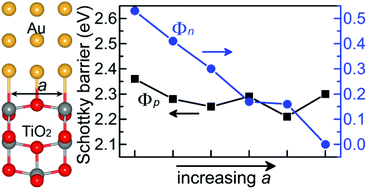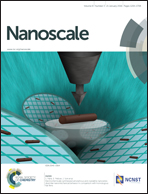Interface Schottky barrier engineering via strain in metal–semiconductor composites†
Abstract
The interfacial carrier transfer property, which is dominated by the interface Schottky barrier height (SBH), plays a crucial role in determining the performance of metal–semiconductor heterostructures in a variety of applications. Therefore, artificially controlling the interface SBH is of great importance for their industrial applications. As a model system, the Au/TiO2 (001) heterostructure is studied using first-principles calculations and the tight-binding method in the present study. Our investigation demonstrates that strain can be an effective way to decrease the interface SBH and that the n-type SBH can be more effectively decreased than the p-type SBH. Astonishingly, strain affects the interface SBH mainly by changing the intrinsic properties of Au and TiO2, whereas the interfacial potential alignment is almost independent of strain due to two opposite effects, which are induced by strain at the interfacial region. These observed trends can be understood on the basis of the general free-electron gas model of typical metals, the tight-binding theory and the crystal-field theory, which suggest that similar trends may be generalized for many other metal–semiconductor heterostructures. Given the commonness and tunability of strain in typical heterostructures, we anticipate that the tunability of the interface SBH with strain described here can provide an alternative effective way for realizing more efficient applications of relevant heterostructures.


 Please wait while we load your content...
Please wait while we load your content...